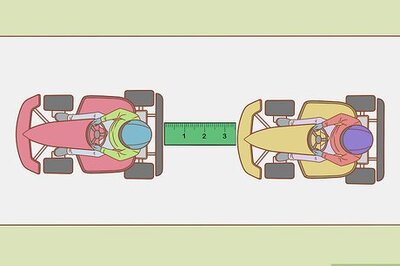
views
How do you say “orange” in Spanish (as a color)?

“Naranja” (nar-AHN-ha) “Naranja” is the most common way to talk about the color orange, and is a great word to have in your back pocket. Unlike other Spanish adjectives that have a feminine and masculine form, “naranja” is used regardless of the gender of the object its describing. Sample sentence: “El gato naranja es muy amigable.”Translation: “The orange cat is very friendly.” Sample sentence: “¡Mis manos estaban de color naranja durante una semana!”Translation: “My hands were orange for a week!”

“Anaranjado” (an-ar-an-HA-do) “Anaranjado” is another common adjective to describe something that’s the color orange. This adjective does decline according to gender, so when describing feminine nouns (often, but not always, nouns ending with the letter “a”), use the form “anaranjada” (an-ar-an-HA-da) instead. Sample sentence: “Me gusta mucho tu camisa anaranjada.”Translation: “I like your orange shirt a lot.” Sample sentence: “El color favorito de mi hija es anaranjado”Translation: “My daughter’s favorite color is orange.”

“Naranjado” (na-ran-HA-do) This is a less common adjective that has the meaning of “something that tastes or looks like an orange.” You likely won’t see this adjective being used very often—it’s far more common to say “naranja” or “anaranjado,” but if you hear someone else using “naranjado,” this is also technically proper Spanish. Keep in mind that the feminine form of this word, “naranjada,” usually gets used to describe an orange-flavored drink. Sample sentence: “La puesta de sol torna naranjado el cielo.”Translation: “The sunset turns the sky orange.” Sample sentence: “Quiero usar la pintura naranjada.”Translation: “I want to use the orange paint.”
How do you say “orange” in Spanish (as a fruit)?

“La naranja” (la nar-AHN-ha) Just like how English has identical words for the color orange and the fruit, the same is true in Spanish. The next time you’re craving a citrus-filled treat, try this word out. Sample sentence: “¿Tienes naranjas frescas?”Translation: “Do you have fresh oranges?” Sample sentence: “La ensalada con trozos de naranja es muy rica.”Translation: “The salad with orange slices is really delicious.”

“El naranjo” (el nar-AHN-ho) This word translates specifically to “orange tree.” If you want to refer to the whole orange plant, and not just the fruit, use this word instead. Sample sentence: “Hay muchos naranjos en la casa de mi abuela.”Translation: “There are a lot of orange trees at my grandma’s house.” Sample sentence: “¡Tu naranjo está creciendo muy bien!”Translation: “Your orange tree is growing so well!”
Spanish Words for Common Colors

Spanish has several other words for colors, and we’ll help you master them. Here are some important words for colors to help you improve your Spanish even more: Rojo (ro-HO): Red Amarillo (am-ah-REE-yo): Yellow Azul (ah-SOOL): Blue Verde (VEHR-day): Green Rosado (ro-SAH-do): Pink Marrón (mar-RON): Brown Morado (mor-AH-do): Purple Blanco (blahn-KO): White Gris (grees): Gray Negro (neh-GROW): Black
Spanish Words for Common Fruits

If you’re looking for the names of other fruit in Spanish, we’ve got you covered. Here’s a list of some common fruits that you might run into in the Spanish-speaking world: La manzana (la man-ZAN-ah): Apple La banana (la bahn-AHN-ah): Banana La mandarina (la man-da-REE-na): Mandarin orange La sandía (la san-DEE-ah): Watermelon La toronja (la tor-OHN-ha): Grapefruit La uva (la OO-va): Grapes El limón (el lee-MOHN): Lemon El mango (el MAN-go): Mango La piña (la peen-YA): Pineapple La fresa (la FRES-ah): Strawberry




















Comments
0 comment